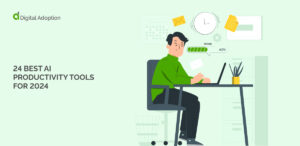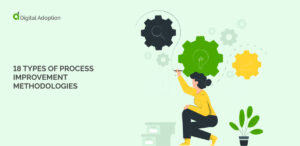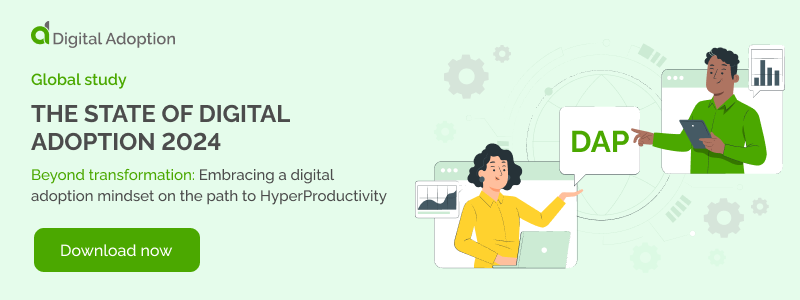The digital economy is fast-paced, dynamic, and continually evolving, which is why workforce agility has become so important for the modern business.
In such an environment, agility and adaptability are more than just advantages, they are survival traits.
After all:
- New technologies introduce new ways of delivering value, products, and services
- Innovative, agile competitors overturn existing companies that cannot or will not adapt in time
- Customers’ expectations change, forcing companies to either adapt to those expectations or lose market share to companies that will
All of these trends have existed for years, but were compounded by COVID-19 in 2020.
The pandemic fast-tracked digital transformation in many industries. Many companies, for instance, chose to migrate to the cloud, implement new telecommuting tools, and adopt a more digital-friendly approach to work.
Though the future is still unwritten, many research firms predict that the global economy will stay volatile and unstable for some time to come.
Companies that want to survive and thrive in such an environment, therefore, should become agile – and organizational agility depends on workforce agility.
4 Pillars of Workforce Agility
Agile workforces adapt more quickly and effectively to change and disruption.
An agile workforce will be more open to change, more resilient in the face of disruption, and, ultimately, more productive in the modern economy.
Here are 4 areas to focus on when building an agile workforce:
1. Skills and Abilities
In recent years, the gap between employers’ needs and employees’ skills has been widening.
This skills deficit not only decreases employee productivity, it also reduces their ability to innovate and adapt.
Here are a few ways to shrink the skills gap and keep employees productive, proficient, and adaptable:
- Provide continual learning and development, ideally through context-based training solutions, such as digital adoption platforms (DAPs)
- Build and continually enhance a structured training program that encompasses the entire employee life cycle, from onboarding to performance improvement
- Cross-training employees so that they can operate multiple tools, become more self-reliant, and more readily adapt to changing circumstances
Workplace training programs are key to improving workforce agility, but skills are only one piece of the puzzle.
2. Mindset and Culture
Culture impacts employees’ mindsets, which in turn can significantly impact their behavior, performance, and agility.
Naturally, there is no such thing as a “perfect” workplace culture – every business is unique and should possess its own unique culture.
However, certain strategies can be used to positively impact attitudes, behaviors, and the company’s culture:
- Simplify and improve the employee experience, which will increase engagement, morale, loyalty, and more
- Improve organizational communication to enhance organizational behavior, boost workplace efficiency, reduce errors, and further improve employee sentiment
- Use long-term communication campaigns to cultivate cultural traits that will improve workforce agility, such as openness to change, a pro-learning mindset, and self-relience
With the proper approach, HR managers and employee experience managers can build a culture and an employee experience that increases engagement, improves behavior, and boosts productivity.
Qualities such as those, after all, directly contribute to a workforce’s agility and adaptability.
3. Processes and Workflows
Agile workflows and processes upend certain traditional processes and operational models.
For instance, a waterfall model advocates sequential, linear processes. Processes that follow this model, argue advocates of agile, are less responsive and they can be quite risky.
Agile models, however, focus on incremental, data-driven, user-centered processes – they are therefore more suited to fast-paced marketplaces and economic conditions.
Here are a few principles that employees should adhere to when implementing agile business processes:
- Use data-driven practices to drive decision-making, rather than preconceived notions or personal opinions
- Apply agile models to areas besides software development, since the same concepts can deliver value in a wide range of business disciplines
- Implement projects incrementally and evaluate constantly, then be prepared to make adjustments as needed
It may be tempting to focus exclusively on implementing new agile work processes, while ignoring the two aforementioned approaches.
However, it must be remembered that employees are the ones using their tools and running the business – if they lack the motivation or the skills, then the workforce’s agility will suffer, regardless of the processes implemented.
Instead, it is important to take a holistic approach when developing workforce agility, focusing on people, processes, as well as the tools that they use.
4. Tools and Technology
Technology can literally transform a company, improving efficiency, resilience, performance, and agility – but it is important to implement technology strategically.
After all, if tools are simply deployed in the workplace without training or context, those tools will undershoot their potential.
Here are a few examples of software that can improve workforce agility:
- Remote working software not only allows employees to work from home, it can also improve overall digital savviness, collaboration, and productivity
- Digital adoption solutions onboard and train employees automatically, directly inside the target software, shrinking time-to-competency and allowing them to adopt new tools more swiftly
- Real-time data and analytics tools can provide immediate insights across a wide number of areas, from the supply chain to customer sentiment, which can help business units make informed decisions quickly
The right tools and infrastructure not only improves agility, they are often a prerequisite for certain types of agile processes.
When adopted appropriately, technology can enable new levels of performance, responsiveness, and agility – not only for the workforce, but for the organization as a whole.

 FACT CHECKED
FACT CHECKED













